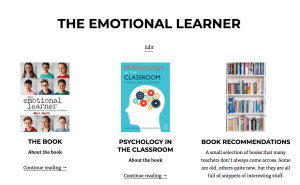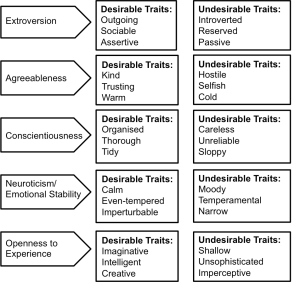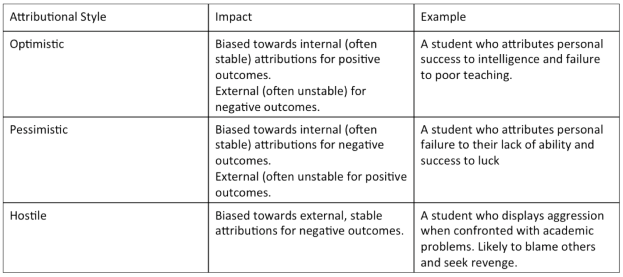Mental health is a serious issue, both in schools and in wider society. Despite this seriousness, however, economic austerity has led to reductions in mental health provision, the consequences of which might take some time to become fully apparent.
The mental health of our children is part of both the general concern and an area that is deeply intertwined with other factors including, it has been argued, the nature of high stakes exams that place greater pressure on young people. Others claim that the issue of children’s declining mental health has been over-hyped; that so-called concept creep has led to normal human behaviours being associated with mental health problems.
We could also argue that the gradual lifting of mental health stigma has encouraged young people to speak out when previously they would have remained silent. What these positions contest to is that the whole issue surrounding mental health is a complex one and, like any complex issue, people will hold many opinions. Nevertheless, there does appear to be some evidence suggesting a link between mental health and school exclusions, indicating that schools are still unable to deal successfully with complex behavioural issues.
Those who support the view that a mental health crisis exists in our school have proposed a number of solutions, from mental health first aiders to the latest intervention where the ‘best’ teachers will be trained as mental health experts.
The suggestion that these best teachers should be trained as experts in mental health sits uncomfortably with me, partly due to the vague notions of best and expert (why should the best teachers make good mental health experts?).
Psychological health and wellbeing represent a complex world of diagnosis, treatment and differing opinions of what constitutes a psychological disorder. A little under two years ago I was ‘given’ a diagnosis of Generalised Anxiety Disorder when prior to this the diagnosis had always been depression. When I was a teenager I suffered from near-crippling insomnia, resulting in my first course of tranquillizers and a significant time away from school (I was thirteen at the time). There was no diagnosis to speak of, just a ten-minute conversation with my GP, who asked if there was anything troubling me. I recall replying ‘not particularly’, a response that perhaps appears dismissive, but to reply ‘actually, everything troubles me,’ would have seemed equally so.
When I was in my early teens, these feelings led me to become withdrawn, self-medicating by means of ‘zoning out’, sinking deep into daydreams, allowing my mind to wander far away from the classroom – an environment I increasingly perceived as hostile. My final couple of years at school saw a change in my behaviour, I countered the hostility by becoming hostile and, as a result, spent a great deal of time in detention or on suspension. Both strategies are maladaptive, but at the time I don’t think my teachers had any idea that such behaviours could, in some circumstances, be an indication of some deeper issue.
I could try and explain my behaviour in a number of ways; from a brain that views all situations as a threat, to the result of a childhood spent moving from one country or town to another, never settling anywhere for more than a year (during my childhood I attended seven primary schools and three secondary schools). Perhaps my behaviour lay in my genes? My Dad suffered from depression (undiagnosed for most of his life), but he would self-medicate by drinking, a behaviour that would lead to his death at the age of only fifty-seven.
My point is that our psychological wellbeing is highly complex and symptoms often contradictory. For example, I have little problem with public speaking but I have been known to suffer from anxiety attacks when the phone rings; I can stand in front of a classroom full of kids, but don’t ask me to attend a staff get-together (although I suspect I’m not alone here). Even with a background in psychology and a number of qualifications in counselling, I still wouldn’t describe myself as a mental health expert; I’d rather leave that description for those who have spent years in training, including supervision and personal therapy; people working within professional guidelines adopted by official bodies.
This final point, for me, is also a cause for concern. Any training offered to teachers will never compare to the training provided to mental health professionals. At best, teachers might be able to identify possible mental health issues and refer pupils on. Some pupils might be more comfortable approaching specific teachers, but these teachers won’t necessarily be the ones allocated the role of MH expert. What teachers do need are explicit and formal procedures for when a pupil displays or admits to having problems. Thankfully, many pupils will seek help without us; over the years I have had pupils approach me to say that they have been diagnosed with depression or anxiety and that their GP had suggested informing their teachers. I don’t know if this is standard practice (I’m not an expert) but these pupils were always sixth form students, some of whom are perhaps mature enough to identify changes in their own behaviour. Most teachers, I would suspect, have their own anecdotes and reflections on mental health, but even the best teachers must also be able to recognise when they are out of their depth.
As was pointed out to me, teachers are, of course, more than just teachers; they are musicians, physicists, chemists, athletes, administrators and even psychologists, but these roles are generally part of their much wider remit as educators, there is little chance of any conflict of interest arising. To expect teachers, even specially trained ones, to divide their time between such vital tasks, is to demean both.
And this leads me on to another concern. If the rise of mental health issues amongst young people is (at least in part) due to the pressures inherent in the current educational environment, will not mental health always play second fiddle to academic achievement? Of course, the two are linked, but I have known schools where the duties of the SENCO have come second to his or her primary role as a teacher.
While I applaud the steps many are proposing, the use of teachers to help solve the problem seems to me to be failing to take mental health seriously and failing to recognise its complexity. The use of Mental Health First Aiders (a proposal that, I think, came from Natasha Devon, the government’s children’s mental health champion until it was discovered that her views were incompatible with those of her employer) would certainly be a good start, so long as teachers understand that their role is limited. Other areas such as Coaching Psychology (a relatively new field) has also shown promise in some sectors.
As for a long term manageable solution, I have little to offer other than an overhaul of mental health provision for young people. The problem is that governments of all colours rarely think so far ahead, preferring quick fixes that lead to political point scoring rather than any real change.
I realise that this is a contentious issue and one that requires some serious joined up thinking if any real resolution is possible. Ultimately, however, it all boils down to the welfare of our children – and what could be more important than that?






